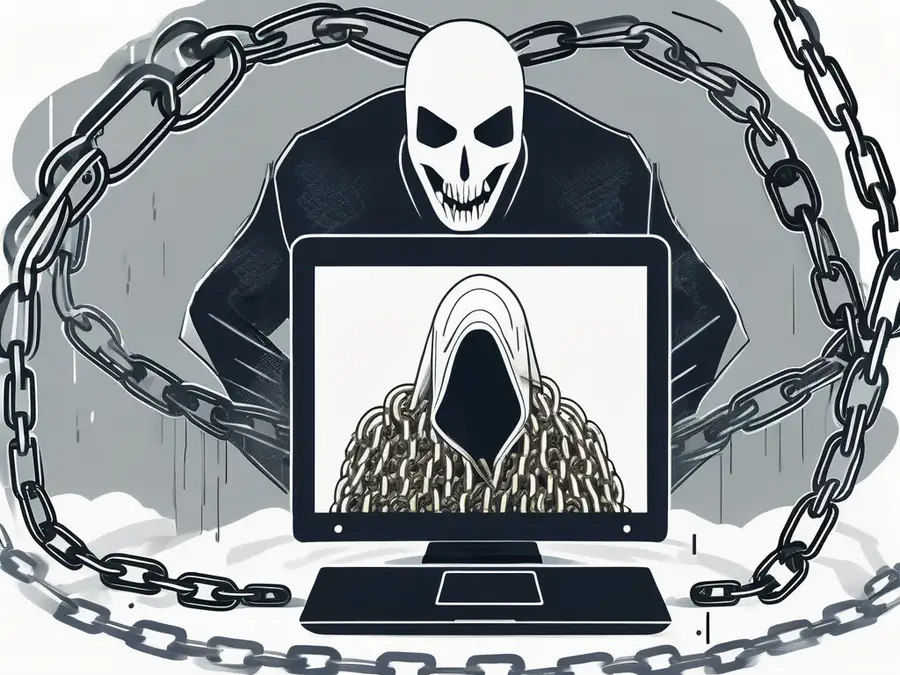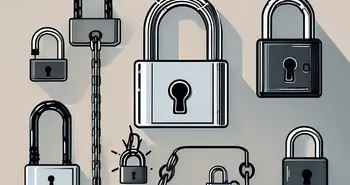What Is Cryptojacking: A Cyber Threat Analysis

Cryptojacking has emerged as a major cybersecurity threat in recent years, targeting both individuals and organizations alike. As an expert in the field, I'll take you through this comprehensive guide to help you understand what cryptojacking is, how it works, its impact, and how you can prevent and combat it.
Understanding the Basics of Cryptojacking
In order to fully grasp the concept of cryptojacking, let's begin by defining what it actually entails.
Cryptojacking is the unauthorized use of someone else's computing resources to mine cryptocurrencies without their knowledge or consent. It involves hackers infiltrating websites, applications, or even devices to harness their computing power. This malicious activity allows them to mine cryptocurrencies such as Bitcoin, Monero, or Ethereum while the victim remains unaware.
But how exactly does cryptojacking evolve and adapt to the ever-changing landscape of technology? Let's take a closer look.
Defining Cryptojacking
Cryptojacking is a stealthy and lucrative form of cybercrime that has gained significant traction in recent years. It has become a favorite tool for hackers due to its low risk and potential for high rewards. By surreptitiously hijacking computing resources, cybercriminals can generate substantial profits without the need for expensive hardware or the risk of being caught.
The Evolution of Cryptojacking
Initially, hackers focused on utilizing users' personal computers to carry out cryptojacking. The rise of cryptocurrency mining malware, such as Coinhive, allowed hackers to embed mining scripts into websites, infecting visitors' machines and harnessing their processing power. This method proved to be highly effective, as unsuspecting users unknowingly contributed to the hackers' mining operations.
However, with the increasing popularity of mobile devices, cybercriminals have expanded their target range to include smartphones and tablets. This shift in focus has opened up new avenues for cryptojacking, as mobile devices often possess significant processing power and are constantly connected to the internet. By compromising mobile apps or injecting malicious code into legitimate applications, hackers can now exploit the computing resources of millions of mobile users, further maximizing their illicit mining operations.
The Role of Cryptocurrency in Cryptojacking
Cryptocurrencies play a pivotal role in cryptojacking attacks. Their decentralized and anonymous nature makes them an appealing choice for hackers. Since cryptocurrencies require extensive computational power to be mined, perpetrators exploit other people's devices to achieve their goals more efficiently.
Moreover, the value and popularity of cryptocurrencies contribute to the allure of cryptojacking. As the price of cryptocurrencies continues to soar, the incentive for hackers to engage in cryptojacking becomes even more enticing. The potential profits that can be generated from mining cryptocurrencies, especially those with high market value like Bitcoin, can be astronomical.
As the world becomes increasingly interconnected, the threat of cryptojacking continues to grow. It is crucial for individuals and organizations to stay vigilant and take proactive measures to protect their computing resources from being hijacked. By understanding the basics of cryptojacking and staying informed about the latest trends and techniques employed by hackers, we can collectively work towards a safer digital landscape.
How Cryptojacking Works
Let's delve deeper into the mechanics of cryptojacking and understand the process involved.
Cryptojacking is a malicious practice where cybercriminals hijack the processing power of unsuspecting users' devices to mine cryptocurrencies. This unethical activity has become increasingly prevalent in recent years, posing a significant threat to individuals and organizations alike.
The Process of Cryptojacking
Cryptojacking typically occurs in two forms: browser-based and file-based. In the browser-based approach, malicious scripts are injected into websites or ads. Once a user visits an infected site or clicks on a compromised ad, the script runs in the background, utilizing their device's processing power to mine cryptocurrencies. The unsuspecting user may notice their device slowing down or overheating, but they are often unaware of the underlying cause.
On the other hand, file-based cryptojacking involves disguising malware as legitimate software, tricking users into unknowingly installing it on their devices. This can happen through deceptive downloads or by exploiting vulnerabilities in software that the user has installed. Once the malware is installed, it quietly runs in the background, siphoning off the device's resources for cryptocurrency mining.
Common Techniques Used in Cryptojacking
Cybercriminals employ various techniques to carry out cryptojacking attacks. One common method is the use of exploit kits, which are pre-packaged software tools that target vulnerabilities in popular software. These kits can be purchased on the dark web, making it easier for even novice hackers to launch cryptojacking campaigns.
Another technique used by cybercriminals is the distribution of cryptojacking malware through infected emails or malicious downloads. Unsuspecting users may receive an email that appears legitimate, but contains a malicious attachment or a link to a compromised website. Once the user interacts with the email or downloads the infected file, the malware is unleashed, initiating the unauthorized cryptocurrency mining process.
In addition, cybercriminals have also been known to compromise cloud-based environments to carry out cryptojacking. By exploiting security vulnerabilities in cloud infrastructure, they can gain unauthorized access to a vast amount of computing power. This allows them to distribute the mining process across multiple devices, maximizing their potential profits while minimizing the chances of detection.
By understanding these techniques, we can better protect ourselves from falling victim to cryptojacking. It is crucial to keep our software and devices up to date with the latest security patches, be cautious of suspicious emails or downloads, and use reputable antivirus software to detect and block cryptojacking attempts.
The Impact of Cryptojacking
Cryptojacking can have severe consequences for both individuals and businesses. Let's explore the impact it can have.
Effects on Personal Devices
For individuals, cryptojacking can result in significant slowdowns and overheating of devices due to the excessive utilization of processing power. Moreover, it can also lead to a surge in electricity bills, reduced battery life, and even physical damage to hardware.
Consequences for Businesses and Organizations
The consequences of cryptojacking for businesses and organizations go beyond just device performance issues. It can lead to significant financial losses due to increased energy consumption, decreased productivity, and potential reputational damage. Furthermore, sensitive data and intellectual property can be compromised, putting the organization and its stakeholders at risk.
Identifying Cryptojacking Attacks
Detecting cryptojacking attacks is crucial to minimizing the impact. Let's explore some signs and tools to help identify potential cryptojacking incidents.
Signs Your Device May Be Compromised
Some common signs of cryptojacking include sluggish device performance, unusually high CPU usage, increased fan noise, and a rapid decline in battery life. If you notice these symptoms, it's important to investigate further to determine if your device has been compromised.
Tools for Detecting Cryptojacking
Several tools and browser extensions are available to assist in detecting and preventing cryptojacking attacks. These tools can actively scan websites, block mining scripts, and alert users when suspicious activity is detected. By using these tools, you can add an extra layer of protection to your devices.
Preventing and Combating Cryptojacking
Protecting yourself from cryptojacking requires a proactive approach. Let's explore some best practices to prevent and combat this cyber threat.
Best Practices for Cryptojacking Prevention
Keep your devices and software up to date with the latest security patches, as these often address vulnerabilities that can be exploited by cryptojackers. Be cautious when clicking on unfamiliar or suspicious links, and regularly scan your devices for malware. Additionally, consider installing ad-blockers and anti-cryptojacking tools to further enhance your protection.
Steps to Take if You've Been Cryptojacked
Discovering that you've been cryptojacked can be alarming, but it's essential to remain calm and take immediate action. Disconnect the affected device from the internet to prevent further illicit mining, scan for malware and remove any identified threats, and update your passwords to ensure your accounts are secure. Learning from such incidents can help you strengthen your defenses and prevent future attacks.
FAQ
What is cryptojacking? Cryptojacking is the unauthorized use of someone else's computing resources to mine cryptocurrencies without their knowledge or consent.
How does cryptojacking work? Cryptojacking can occur through browser-based or file-based methods, where hackers utilize a victim's device to mine cryptocurrencies using injected scripts or disguised malware.
What are the consequences of cryptojacking? Cryptojacking can result in reduced device performance, increased electricity bills, and potential damage to hardware for individuals. For businesses, it can lead to financial losses, decreased productivity, and compromised data.
How can I detect and prevent cryptojacking? Look out for signs of compromised devices, such as slow performance and high CPU usage. Use tools and browser extensions that can scan for mining scripts and block malicious activity. Additionally, follow best practices like regular software updates and cautious internet browsing.
As an expert on the subject, I urge you to remain vigilant against the threat of cryptojacking. By understanding the basics, identifying signs of compromise, and implementing preventive measures, you can protect yourself and your devices from falling victim to this pervasive cyber threat.
While staying vigilant against cyber threats like cryptojacking, it's equally important to ensure your trading activities are secure and efficient. Morpher.com offers a groundbreaking trading platform that not only prioritizes your safety with a non-custodial wallet but also enhances your trading experience with zero fees, infinite liquidity, and the ability to trade across various asset classes. Embrace the future of investing with fractional shares, short selling without interest fees, and up to 10x leverage to maximize your trades. Ready to transform your trading experience? Sign Up and Get Your Free Sign Up Bonus today and join the Morpher community for a unique, blockchain-powered trading journey.

Disclaimer: All investments involve risk, and the past performance of a security, industry, sector, market, financial product, trading strategy, or individual’s trading does not guarantee future results or returns. Investors are fully responsible for any investment decisions they make. Such decisions should be based solely on an evaluation of their financial circumstances, investment objectives, risk tolerance, and liquidity needs. This post does not constitute investment advice.

Painless trading for everyone
Hundreds of markets all in one place - Apple, Bitcoin, Gold, Watches, NFTs, Sneakers and so much more.

Painless trading for everyone
Hundreds of markets all in one place - Apple, Bitcoin, Gold, Watches, NFTs, Sneakers and so much more.








